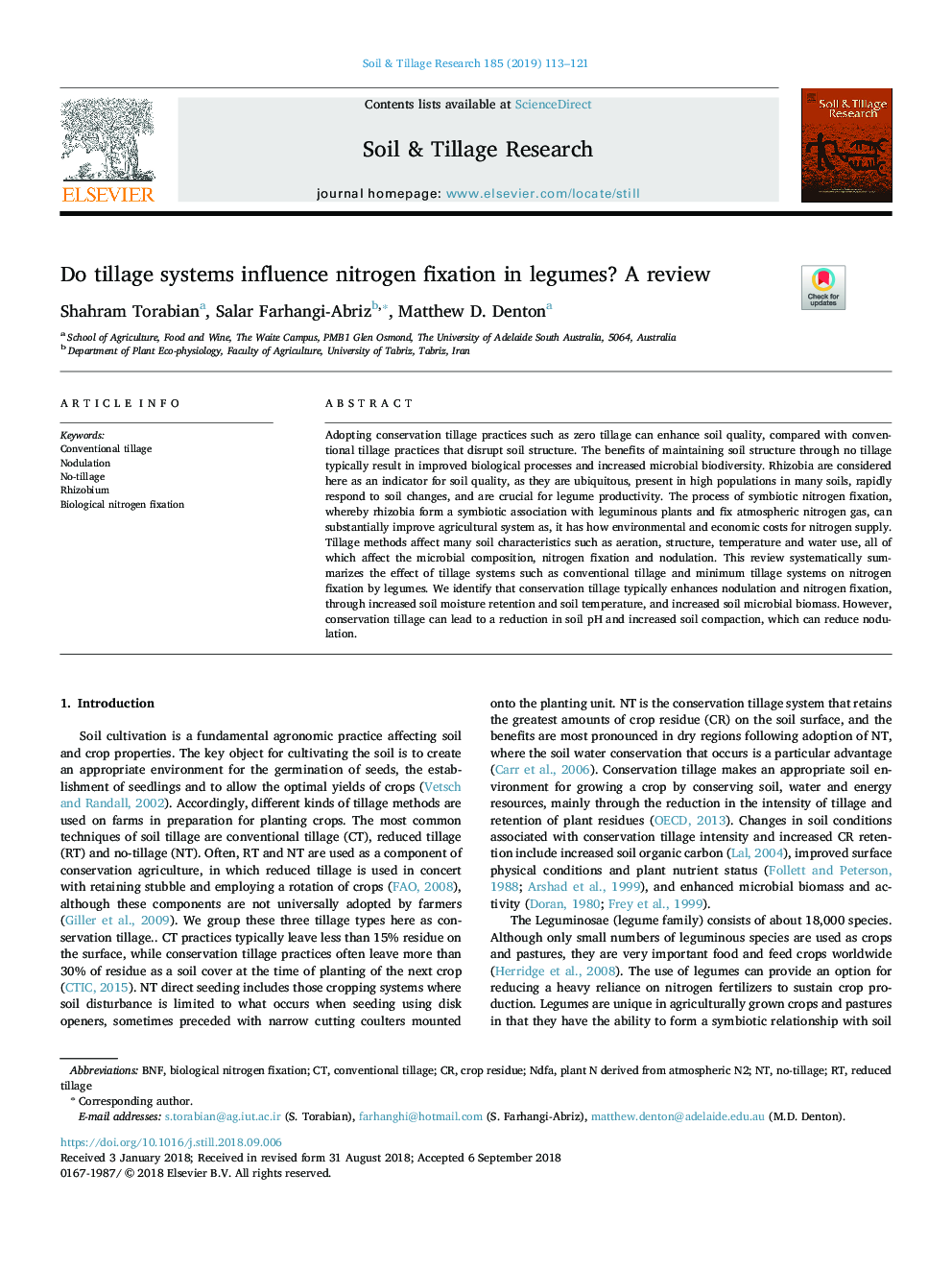| کد مقاله | کد نشریه | سال انتشار | مقاله انگلیسی | نسخه تمام متن |
|---|---|---|---|---|
| 10139135 | 1645939 | 2019 | 9 صفحه PDF | دانلود رایگان |
عنوان انگلیسی مقاله ISI
Do tillage systems influence nitrogen fixation in legumes? A review
ترجمه فارسی عنوان
آیا سیستم های خاکورزی بر پایه نیتروژن در حبوبات تأثیر می گذارند؟ بازنگری
دانلود مقاله + سفارش ترجمه
دانلود مقاله ISI انگلیسی
رایگان برای ایرانیان
کلمات کلیدی
موضوعات مرتبط
مهندسی و علوم پایه
مهندسی انرژی
انرژی های تجدید پذیر، توسعه پایدار و محیط زیست
چکیده انگلیسی
Adopting conservation tillage practices such as zero tillage can enhance soil quality, compared with conventional tillage practices that disrupt soil structure. The benefits of maintaining soil structure through no tillage typically result in improved biological processes and increased microbial biodiversity. Rhizobia are considered here as an indicator for soil quality, as they are ubiquitous, present in high populations in many soils, rapidly respond to soil changes, and are crucial for legume productivity. The process of symbiotic nitrogen fixation, whereby rhizobia form a symbiotic association with leguminous plants and fix atmospheric nitrogen gas, can substantially improve agricultural system as, it has how environmental and economic costs for nitrogen supply. Tillage methods affect many soil characteristics such as aeration, structure, temperature and water use, all of which affect the microbial composition, nitrogen fixation and nodulation. This review systematically summarizes the effect of tillage systems such as conventional tillage and minimum tillage systems on nitrogen fixation by legumes. We identify that conservation tillage typically enhances nodulation and nitrogen fixation, through increased soil moisture retention and soil temperature, and increased soil microbial biomass. However, conservation tillage can lead to a reduction in soil pH and increased soil compaction, which can reduce nodulation.
ناشر
Database: Elsevier - ScienceDirect (ساینس دایرکت)
Journal: Soil and Tillage Research - Volume 185, January 2019, Pages 113-121
Journal: Soil and Tillage Research - Volume 185, January 2019, Pages 113-121
نویسندگان
Shahram Torabian, Salar Farhangi-Abriz, Matthew D. Denton,
